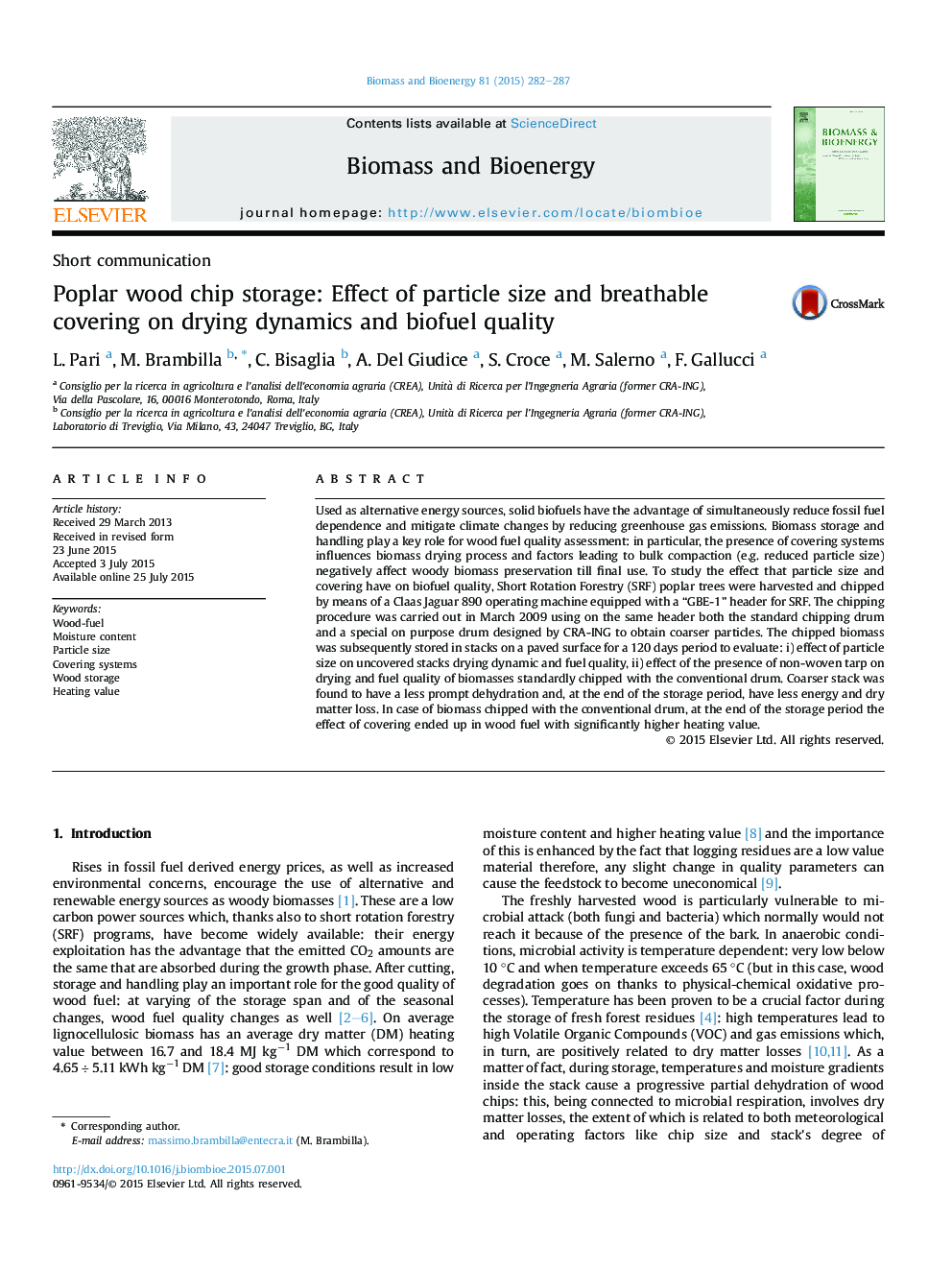| Article ID | Journal | Published Year | Pages | File Type |
|---|---|---|---|---|
| 7063925 | Biomass and Bioenergy | 2015 | 6 Pages |
Abstract
Used as alternative energy sources, solid biofuels have the advantage of simultaneously reduce fossil fuel dependence and mitigate climate changes by reducing greenhouse gas emissions. Biomass storage and handling play a key role for wood fuel quality assessment: in particular, the presence of covering systems influences biomass drying process and factors leading to bulk compaction (e.g. reduced particle size) negatively affect woody biomass preservation till final use. To study the effect that particle size and covering have on biofuel quality, Short Rotation Forestry (SRF) poplar trees were harvested and chipped by means of a Claas Jaguar 890 operating machine equipped with a “GBE-1” header for SRF. The chipping procedure was carried out in March 2009 using on the same header both the standard chipping drum and a special on purpose drum designed by CRA-ING to obtain coarser particles. The chipped biomass was subsequently stored in stacks on a paved surface for a 120 days period to evaluate: i) effect of particle size on uncovered stacks drying dynamic and fuel quality, ii) effect of the presence of non-woven tarp on drying and fuel quality of biomasses standardly chipped with the conventional drum. Coarser stack was found to have a less prompt dehydration and, at the end of the storage period, have less energy and dry matter loss. In case of biomass chipped with the conventional drum, at the end of the storage period the effect of covering ended up in wood fuel with significantly higher heating value.
Related Topics
Physical Sciences and Engineering
Chemical Engineering
Process Chemistry and Technology
Authors
L. Pari, M. Brambilla, C. Bisaglia, A. Del Giudice, S. Croce, M. Salerno, F. Gallucci,
